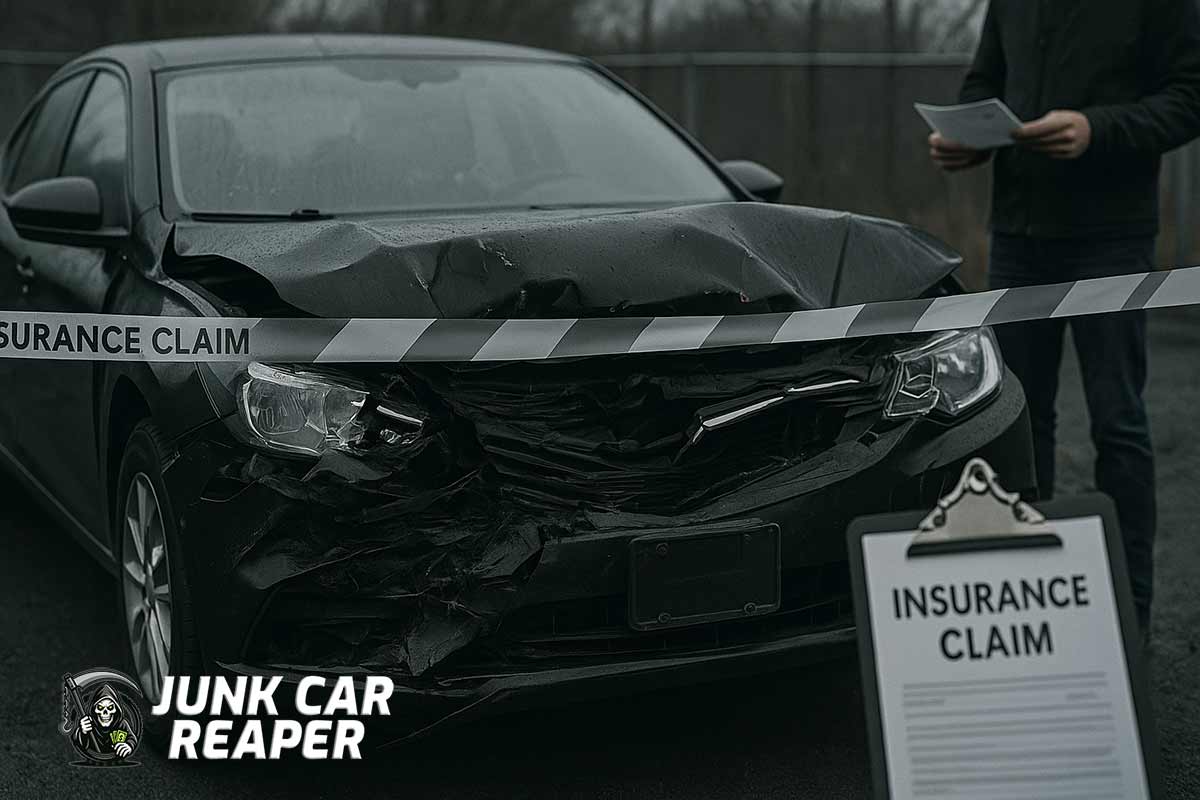Insurance pays for a wrecked car based on its actual cash value before the accident. Adjusters look at the year, make, model, mileage, condition, and recent market sales. They subtract your deductible, and then you receive a settlement check. The number is rarely what you hope, but it reflects what insurers believe the car would have sold for on the open market.
Insurance usually pays the actual cash value (ACV) of your car minus your deductible. For most wrecked cars, the payout ranges from a few thousand dollars for newer models to just a few hundred for older clunkers. The insurer decides if the car is “totaled” when repair costs exceed its ACV.
How insurers calculate payout
Insurers hire adjusters to appraise your wrecked car. They use local sales data, condition reports, and mileage to set value. If repairs cost more than 70–80% of that value, they declare the car a total loss and issue payment instead of fixing it.
- Vehicle details: year, make, model, trim
- Condition: mileage, maintenance history, prior damage
- Market: recent sales of similar cars in your area
- Deductions: your deductible and any salvage value
Average insurance payouts for wrecked cars
Payouts vary widely. A wrecked 10-year-old sedan may bring $1,500–$3,000. A newer SUV could bring $10,000 or more. A high-mileage junker might only be valued at $500. Insurers base the number on ACV, not repair bills.
| Type of Car | Typical Payout Range |
|---|---|
| Older sedans (10–15 years) | $500 – $3,000 |
| Mid-range cars (5–10 years) | $3,000 – $8,000 |
| Newer SUVs and trucks (0–5 years) | $8,000 – $20,000+ |
| High-mileage clunkers | $200 – $800 |
When does insurance total a car?
A car is totaled when repair costs are higher than its actual value. For example, if a car worth $4,000 needs $5,500 in repairs, it is declared a total loss. The insurer then pays you the $4,000 minus your deductible. They may keep the car, or you can “buy back” the salvage for a reduced settlement.
Why payouts may feel low
Insurance doesn’t pay what you owe on a loan or what you invested in repairs. They pay market value only. This leaves many sellers short, especially if financing or upgrades were involved. Gap insurance can cover the difference if you owe more than ACV.
- No coverage for sentimental value
- Aftermarket upgrades often excluded
- Deductible reduces final payout
What to do after insurance pays
Once you accept the payout, the insurer may take the wrecked car as salvage. If you keep it, you’ll receive a smaller settlement but can sell the wreck yourself. Many sellers turn to junk car buyers for extra cash on top of the insurance payout.
Learn your options here: who pays the most cash for junk cars.
FAQs
Will insurance pay more if I keep the wrecked car?
No. If you keep the car, the insurer deducts its salvage value from your payout. You can still sell the wreck to a junk buyer for cash later.
Does full coverage pay more than liability?
Yes. Liability-only policies do not cover damage to your own car. Full coverage is required to receive payment for a wrecked vehicle.
Can I reject the insurer’s offer?
Yes. You can negotiate with evidence of higher local sales. Bring listings or appraisals to push for a fairer settlement.
Cash after the crash
Insurance pays market value, but the Reaper pays cash for the wreck itself. If you keep your totaled car, we’ll buy it as-is, pay you on the spot, and tow it free. That means extra money on top of your settlement.

